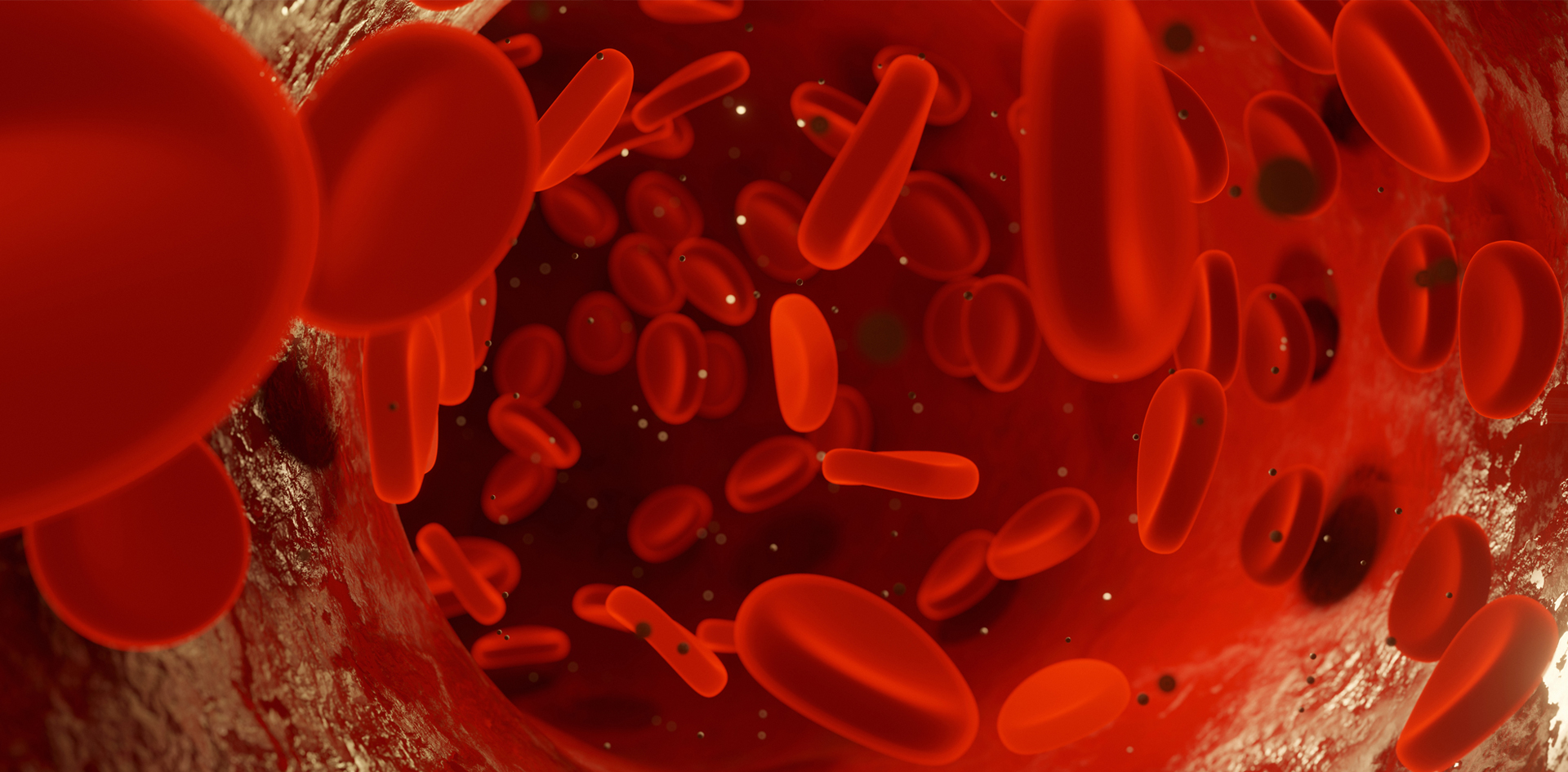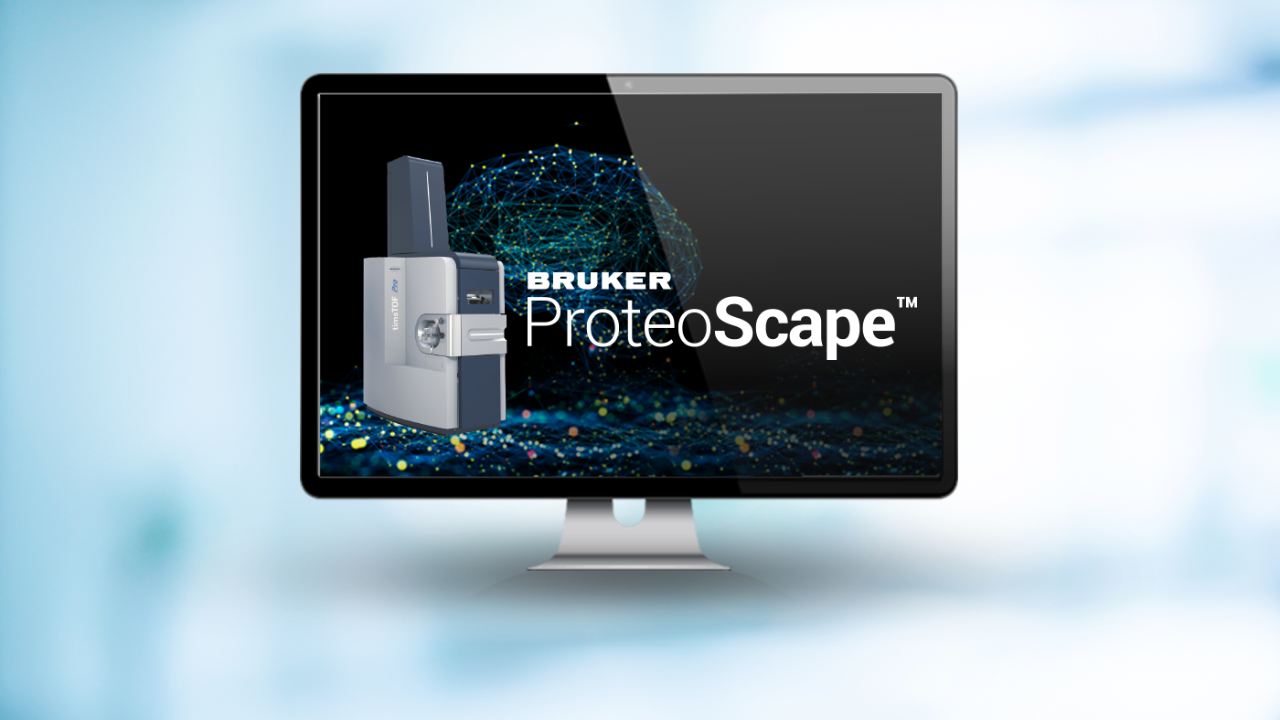

Transform precision medicine with plasma proteomics and mass spectrometry
The key to personalized healthcare: 4D-Proteomics™ ecosystem by Bruker
Explore the potential of mass spectrometry for personalized healthcare with plasma proteomics. Mass spectrometry has unlocked new possibilities for studying the plasma proteome, i.e. the set of proteins in blood plasma. By using this technology, researchers can identify and quantify proteins and post-translational modifications at high sensitivity. This provides valuable insights into the diagnosis and treatment of diseases such as cancer, cardiovascular diseases, and neurological disorders.
The basics of plasma proteomics
Plasma proteomics is the study of proteins in the liquid part of blood called plasma. These proteins can play important roles in immune response, blood clotting, and transportation of hormones and nutrients. The plasma protein content is diverse and complex, from proteins that have specific functions in blood to leakage proteins that don't have a specific function in circulation or low abundant signaling molecules such as small protein hormones and cytokines.
One application of plasma proteomics is discovering candidate biomarkers for diagnosing, prognosis or even theragnostic purposes. While blood analysis is a common diagnostic tool in medicine, many established biomarkers lack specificity and new ones need to be developed to meet the challenges of personalized medicine.
By analyzing the plasma proteome, researchers can identify candidate biomarkers that can be used to diagnose diseases at an early stage, monitor disease progression, and predict treatment response. This approach is transforming the way we approach healthcare by enabling us to move from a one-size-fits-all approach to a more personalized approach, revolutionizing medical care by tailoring treatment to the individual needs of each patient.
However, analyzing the plasma proteome is not without its challenges. Plasma is a complex mixture of proteins, and many of the proteins are present in very low concentrations. Additionally, some proteins may have a modified sequence or might be masked by more abundant proteins, making their detection difficult.
The power of mass spectrometry for analyzing the plasma proteome
Mass spectrometry-based proteomics has become a powerful technology for analyzing the plasma proteome and has improved dramatically over the years. MS-based proteomics has the potential for highly specific measurements and protein patterns, rather than single biomarkers, which could be the relevant readout. Unlike affinity-based approaches, it can detect untargeted sequence modifications, making it a method of choice for the detection of Protein Altering Variants (PAV's) or protein Quantitative Loci (pQTLs).
A significant advantage of plasma proteomics is its minimally invasive nature, making it an attractive avenue for translating research from the laboratory to the clinic. However, it is important to consider various factors, from sample collection to achieving translational data, to make the most of the potential of mass spectrometry-based plasma proteomics.
The 4D-Proteomics™ ecosystem by Bruker offers a comprehensive solution to tackle the challenges associated with large-scale plasma-based proteomics research. Designed to optimize robustness, throughput, and depth of analysis, this cutting-edge platform encompasses every step, from sample preparation to data acquisition and analysis. By leveraging the 4D-Proteomics™ ecosystem, scientists can explore the full potential of mass spectrometry-based plasma proteomics, revolutionizing research in this field and accelerating its translation to clinical applications.
The combination of the timsTOF fleX system and the complete Bruker ecosystem transforms how we analyze plasma samples in clinical proteomics research. By seamlessly integrating sample preparation, instrument operation, and data analysis, our workflow attains unparalleled efficiency and speed. This integration empowers us to rapidly move from sample to results, even in large-scale projects, while maintaining the utmost sensitivity, robustness, traceability, and analytical quality. Now, we effortlessly undertake extensive clinical proteomics projects, delivering quick turnaround times without compromising the highest standards of analytical quality required in our lab.
Eduardo Chicano-Gálvez, Ph.D., Head of IMIBIC Mass Spectrometry and Molecular Imaging Unit, Cordoba, Spain
ENRICH-iST: Solving the dynamic range challenge in high-throughput plasma proteomics
Blood plasma and serum are valuable sources of information for preclinical and clinical studies. However, accessing low-abundant proteins in these samples is challenging due to high dynamic range and sample complexity. The PreOmics ENRICH-iST kits offer a robust solution, enriching low-abundant proteins while maintaining proteome coverage. With high reproducibility and fast processing time, the ENRICH-iST kit enables efficient analysis of large sample cohorts. ENRICH-iST simplifies proteomics workflows and delivers biologically unbiased and reliable results and is compatible with humans and other mammalian species.
PQ500: The peptide kit for plasma proteomics quantification
PQ500 from Biognosys allows accurate profiling of individual plasma samples providing absolute quantitative values for almost 600 proteins targeted in the panel. This means highly multiplexed measurements over the broad dynamic range of plasma proteins, with more than 800 carefully selected reference peptides covering six orders of magnitude.
PQ500 is the best choice for pre-clinical plasma research where accuracy, specificity and reproducibility between samples, or sample batches, is a must. It covers hundreds of relevant proteins, including a significant number of FDA approved protein biomarkers in several physiological processes.
PQ500 can be used in combination with any acquisition type, including prm-PASEF® and dia-PASEF® modes.
In partnership with Bruker, we have enhanced the prm-PASEF® technology over the last year. As a result, we can now effectively track over 700 peptides in plasma samples through targeted proteomics. The advanced dual-tims technology of the Bruker timsTOF Pro was instrumental in achieving this feat, demonstrating the immense potential of targeted proteomics.
Prof. Gunnar Dittmar, Ph.D., Group Leader Proteomics of Cellular Signalling, Department of Infection and Immunity, Luxembourg Institute of Health, Luxembourg
Ultra-sensitive, high-throughput and reproducibility
PepSep™ high-performance liquid chromatography (HPLC) columns enable better separation of proteins improving coverage, throughput, sensitivity, and reproducibility.
Increase instrument performance and efficiency with the PepSep™ MAX column. When combined with the timsTOF HT, immerse yourself in 4D-Proteomics™, so you can accurately analyze 1000s of samples with high throughput at PASEF® speed.
Enhanced depth of proteome coverage
Both CaptiveSpray and VIP-HESI with µflow sprayer ensure simple LC connection, robust operation and ultra-reproducible spraying conditions. On the MS side, the combination of Trapped Ion Mobility Separation (TIMS) and Parallel Accumulation Serial Fragmentation (PASEF®), allows quantifying several hundreds of proteins in minutes using single-shot injections and label-free quantification. This is even in the presence of a wide range of protein concentrations. Large-scale studies are enabled without the need for a reference channel, simplifying planning and allowing for rapid analysis of large sample sizes. The 4D-Proteomics™ approach, powered by both TIMS and PASEF® technologies deliver unique selectivity by combining high-resolution separation both in the ion mobility and the mass/charge dimension. All detected peptides are encoded with their retention time, accurate Collisional Cross Section (CCS), mass to charge (m/z) values and MS/MS fragmentation pattern for unrivaled confidence.
With the power of dia-PASEF® discover the plasma proteome like never before with higher depth of coverage in less than half the turnover time per sample. Get ready to routinely quantify thousands of plasma proteomes in population-wide cohorts using dia-PASEF®.
Supercharge your plasma proteomics analysis
Streamline your workflow, make real-time decisions, and achieve impactful results with Bruker ProteoScape™. Unleash the full potential of CCS-enabled 4D-Proteomics™ acquisitions using TIMScore™ and TIMS DIA-NN. Identify more PSMs, peptides, and proteins with TIMScore™, and ensure reliable and accurate experiments with TIMS DIA-NN.
Effortlessly build plasma spectral libraries with TIMScore™-powered DDA search results, seamlessly integrating with TIMS DIA-NN. Eliminate data analysis impediments encountered in plasma proteomics experiments. Experience real-time triggered analysis, breaking barriers and saving time.
Enjoy the convenience of Run & Done and BPS Acquisition Control, providing immediate results and automated system suitability analysis. Combine with the Biognosys iRT kit for vigilant system monitoring with Bruker ProteoScape™ and Bruker TwinScape™. Say goodbye to analysis bottlenecks and wasted samples, let Bruker ProteoScape™ dominate your proteomics data analysis.
Maximize sensitivity and reproducibility in your plasma proteomics studies
Spectronaut® 18 is the solution to your plasma proteomics research challenges. Increased sensitivity with deep-learning augmented peptide identification in Spectronaut® allows for the identification of more precursors and proteins, which translate into high levels of data completeness and reproducibility between samples and even projects.
For large-scale plasma projects, with big sample cohorts, Spectronaut® 18 brings new standards in high throughput, with dedicated packages for Linux- and cloud environments: analyze more samples in less time.
No time for waiting? With Spectronaut® 18 you can get all the benefits from our library-free, directDIA+ workflow while saving time by kick-starting your analysis from the very first acquired sample. Analyze your project while you acquire the data! Have more than 80% of the full experiment analysis finished by the time acquisition is done.
Discover novel plasma biomarkers with better insights and scalability
Maximize your plasma proteomics analysis with Biognosys, the recommended outsourcing partner by Bruker. With the Biognosys TrueDiscovery™ platform powered by Spectronaut®, get unparalleled specificity and depth in quantifying plasma proteomes. Identify differentially regulated proteins as unbiased biomarker candidates with our hypothesis-free approach.
The TrueDiscovery™ platform covers 4,200 proteins in plasma or serum, including low-abundant proteins, thanks to our optimized depletion and sample enrichment workflow. Scale up to thousands of samples with industry-leading throughput.
Gain valuable insights from TrueDiscovery™ studies to guide follow-on studies using TrueSignature™ custom panels. Enhance your analysis further by combining our plasma profiling workflow with the PQ500™ reference panel for absolute quantification.
For Research Use Only. Not for use in clinical diagnostic procedures.



